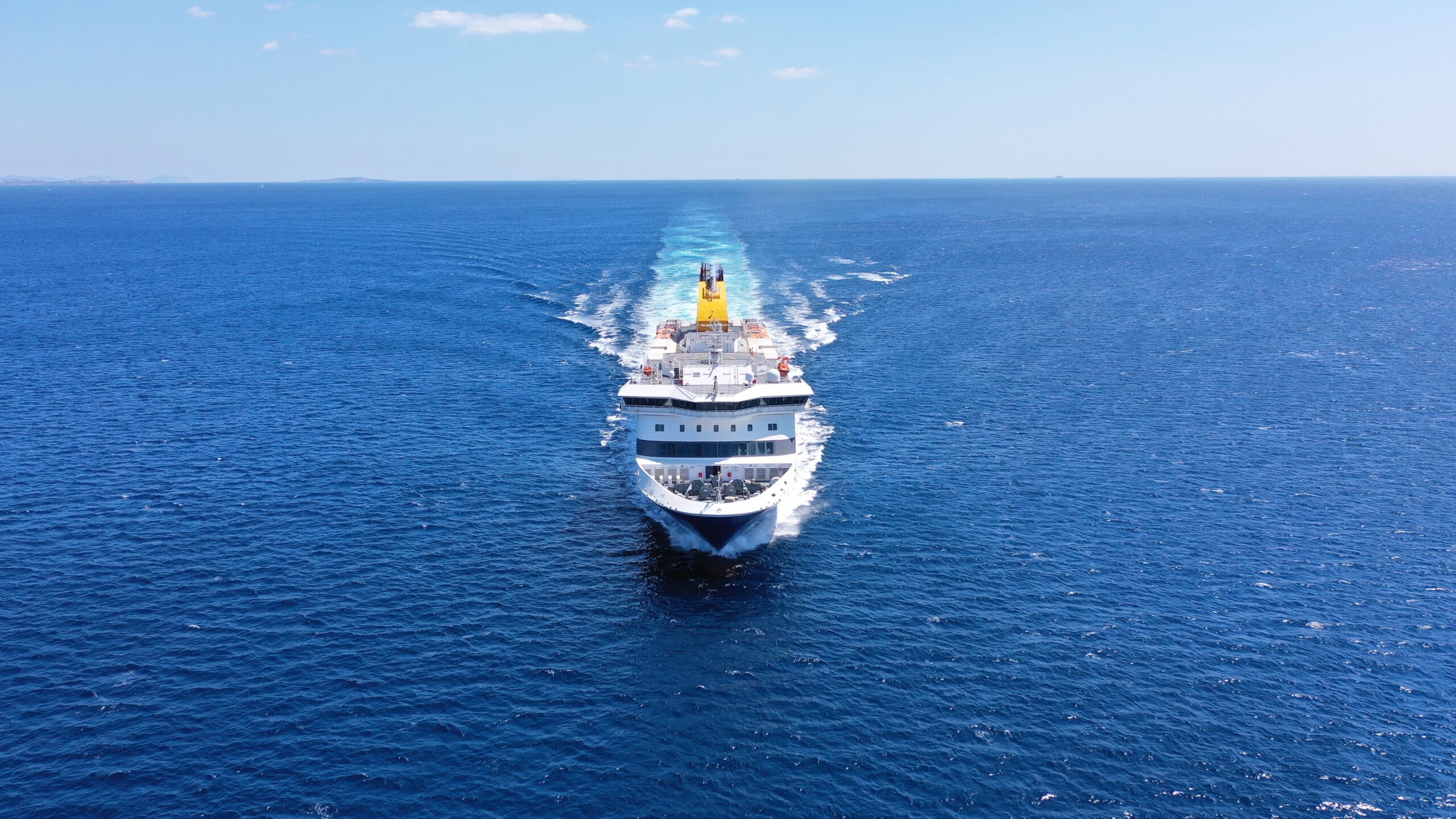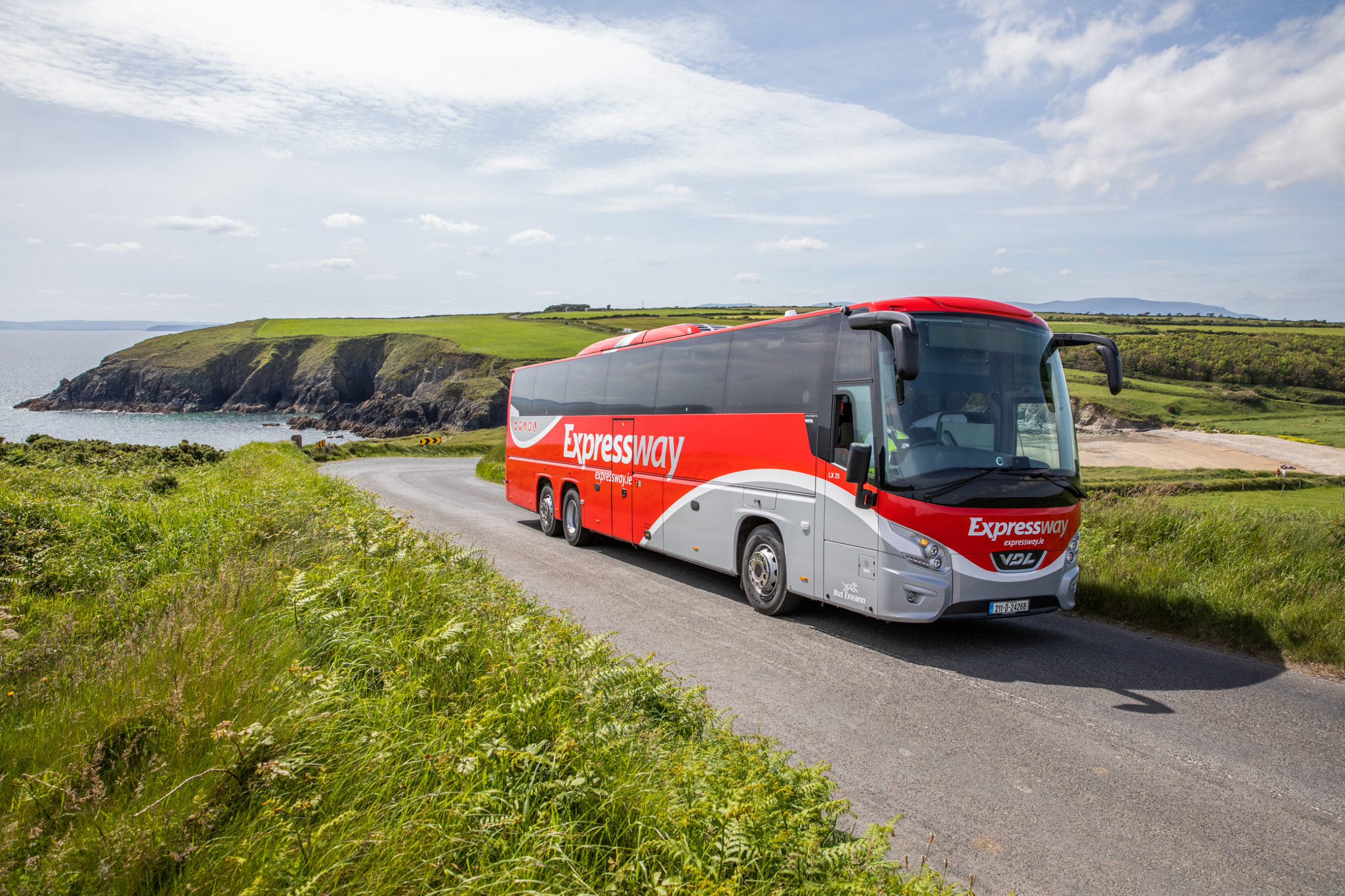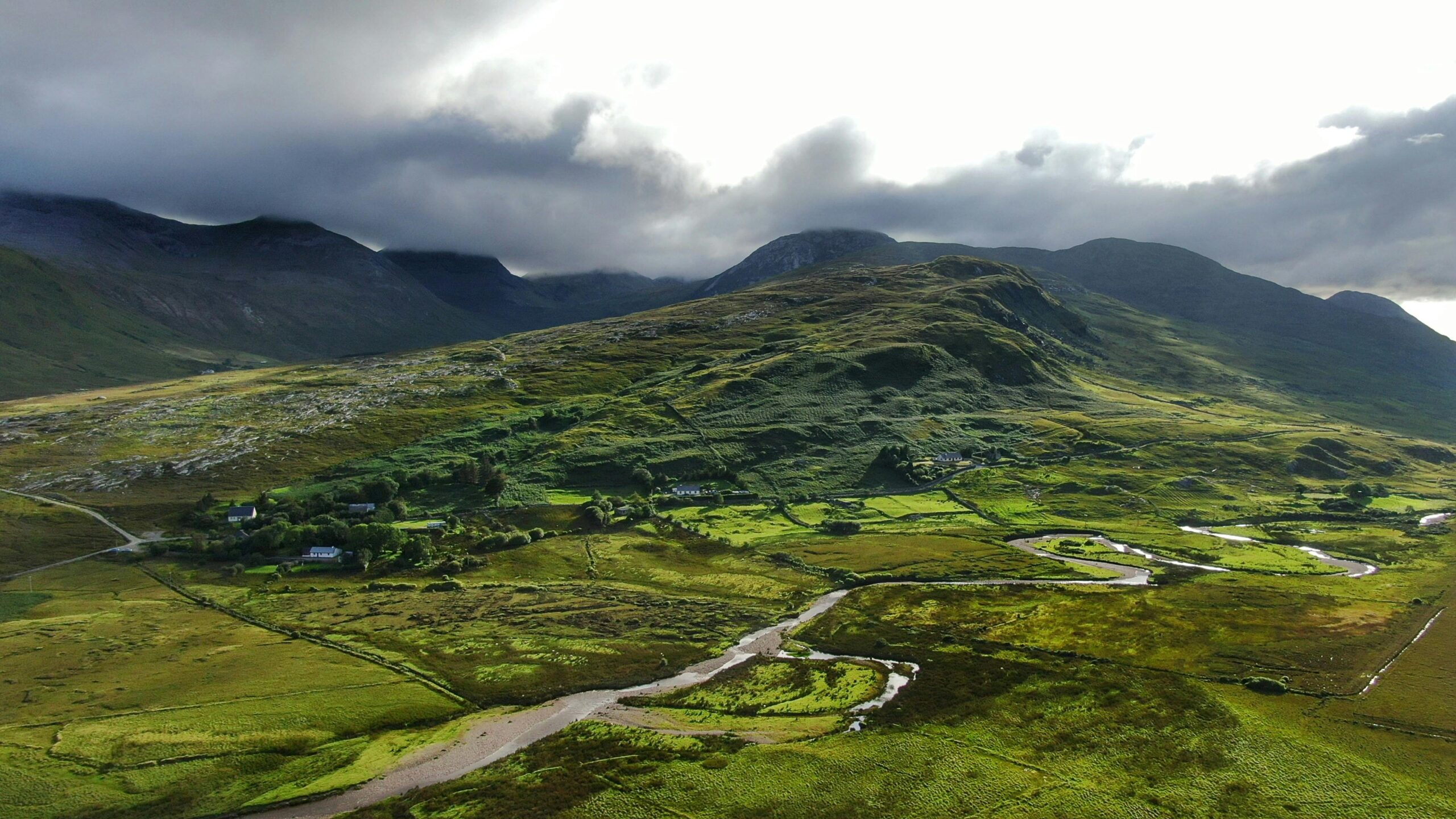Table of Contents
5 ‘Green’ travel ideas to consider when planning a trip to Ireland

Written by: Michael Malone
Published: May 6, 2025
Last updated: October 8, 2025
Reading time: 4 mins
Millions of people visit Ireland every year from around the world to take in its natural beauty and sample its unrivalled nightlife.
Tourists today are more environmentally conscious than ever before, and many are exploring ways of reducing their carbon footprint without making major sacrifices on their travels.
With this in mind, here are 5 things you can do to enjoy a more eco-friendly trip to Ireland, from alternative modes of transportation to fun activities to check out once you’re here.
Take the Ferry instead of Flying

If you’re travelling to Ireland, taking the ferry is generally much more environmentally friendly than taking a flight.
If you’re taking a vehicle on board, this can increase the CO2 per passenger-kilometre, and can result in more emissions if using a petrol or diesel car. However, eco-conscious travellers may have an EV, reducing their reliance on any fossil fuel transport on arrival.
Let’s look at an example of a family of four travelling from London to Dublin by different modes of transport.
It is also extremely convenient to travel by ferry, and when you take into consideration the waiting time in airports, it is often quicker than taking a flight, depending on the route and crossing time. Most ferries from Britain to Ireland take between 2 hours and 4 hours.
There are 6 ferry routes from Britain to the island of Ireland, with daily routes across the Irish Sea from England, Scotland and Wales, provided by three operators:
- Holyhead, Wales to Dublin (Stena Line, Irish Ferries) (3 hours, 15 mins)
- Fishguard, Wales to Rosslare (3 hours, 30 mins) (Stena Line)
- Liverpool to Belfast (8 hours) (Stena Line logo)
- Pembroke, Wales to Rosslare (4 hours) (Irish Ferries logo)
- Cairnryan, Scotland to Belfast (2 hours, 15 mins) (Stena Line logo)
- Cairnryan, Scotland to Larne (2 hours) (P&O Ferries)
There are also routes from Brittany in north-west France running around 13 times per week – provided by Irish Ferries, Stena Line and Brittany Ferries.
For those who are not in a rush, a ferry also runs from Bilbao in the Basque Country to Rosslare, operated by Brittany Ferries. The boat from Bilbao to Ireland takes around 32 hours, around 30 hours more than a flight to Dublin. However, if you have the time, this environmentally friendly option is a travel experience you won’t forget.
Use public transport to get around
Public transport in Ireland is far from flawless, but still, buses and trains are both generally less taxing on the environment than driving a petrol or diesel engine car.
BEIS Travel estimates that the CO2 emissions for a solo traveller in a diesel car are 171g per km travelled, while on a bus, it is 70% less. For two people, there is less of a difference, with the CO2 per passenger being similar for a diesel car and a bus.
But if you’re coming solo, Bus Éireann’s network of 250 routes should take you to where you want to go in the country. When you arrive, the national bus service has a number of routes connecting Dublin city centre and Dublin Airport to get tourists from their flight into the capital with minimal fuss or traffic.

People often wonder whether they have to book a Bus Éireann bus in advance. It is possible to pay for your Bus Éireann ticket on board, but this can leave you at the mercy of seat availability.
Those who paid for tickets in advance are given priority. It’s therefore recommended that you purchase your ticket online at buseireann.ie to avoid disappointment and waiting at the bus stop for the next coach.
There are also many private coaches in operation, for example, Feda O’Donnell buses, which travel from Galway to Donegal each day in both directions, stopping in Sligo and Donegal town among other towns en route.
Other operators, such as CityLink, provide services connecting Ireland’s major cities, Dublin, Cork, Galway, and Limerick, without all the stops in between.
From there, visitors can spread to see and experience all that Ireland has to offer in the region.
Private coaches are usually quicker than Bus Éireann coaches, as they usually take a shorter route and have fewer stops along the route. Tickets can also be booked online for most private coaches.
Buses are available for convenience – however trains are much more environmentally friendly for green holidaymakers. Irish Rail (or Iarnród Éireann) trains have a number of routes across Ireland, and they are used by thousands of tourists each year to travel across the country.
Go hiking in Connemara

Ireland is known for its nature, the Emerald Isle didn’t get its name from jewel mining, and hiking is a popular activity for visitors. Hikers, walkers, ramblers, and explorers can experience the picturesque countryside without worrying about the environmental weight of their footprint, as long as they take home their litter, of course!
Hiking is not only a ‘green activity’, it’s also enjoyable, free and great for your physical and mental health. Popular hiking destinations include Connemara, Kerry and west Donegal.
So if you are planning to explore Ireland on your travels – especially the west – it is well worth packing your hiking boots.
Explore Ireland’s cycling Greenways
In a similar light to hiking, cycling is a budget-friendly and green way to experience Ireland’s stunning countryside.
Ireland’s greenways are an incredible and growing network of tracks and trails connecting old railway routes with a newly reimagined use alongside other existing and newly made nature tracks.
Extending for hundreds of kilometres around the country, these greenways offer walkers and cyclists an unparalleled way to enjoy Ireland’s rural beauty.
For more experienced cyclists, Ireland’s west coast has the world’s longest signed coastal route, the Wild Atlantic Way. It takes between two weeks and a month to cycle the entirety of the route, which has some of the most stunning scenery in Europe.
Rent a bike to get aorund the city

Ireland isn’t all countryside, stunning as we’ve already said it is, and renting a bike can be the most eco-friendly way to do some urban exploring and enjoy all the city has to offer.
In the capital, Dublinbikes is a popular public bicycle rental scheme – which allows locals and tourists to pick up and drop off bikes at a number of locations across the city.
A three-day Dublinbikes subscription costs only €5 – which means it is a cheap and green way of getting around the city for visitors.
In Galway, rental companies worth checking out include West Ireland Cycling, An Rothar, and Fat Bike Galway, allowing you to cycle out to Salthill Promenade, explore the Claddagh, and even venture further west out to Barna and into Connemara.
5 ‘Green’ travel ideas to consider when planning a trip to Ireland
Published: May 6, 2025
Last updated: October 8, 2025

Written by: Michael Malone
Reading time: 4mins
Millions of people visit Ireland every year from around the world to take in its natural beauty and sample its unrivalled nightlife.
Tourists today are more environmentally conscious than ever before, and many are exploring ways of reducing their carbon footprint without making major sacrifices on their travels.
With this in mind, here are 5 things you can do to enjoy a more eco-friendly trip to Ireland, from alternative modes of transportation to fun activities to check out once you’re here.
Take the Ferry instead of Flying

If you’re travelling to Ireland, taking the ferry is generally much more environmentally friendly than taking a flight.
If you’re taking a vehicle on board, this can increase the CO2 per passenger-kilometre, and can result in more emissions if using a petrol or diesel car. However, eco-conscious travellers may have an EV, reducing their reliance on any fossil fuel transport on arrival.
Let’s look at an example of a family of four travelling from London to Dublin by different modes of transport.
It is also extremely convenient to travel by ferry, and when you take into consideration the waiting time in airports, it is often quicker than taking a flight, depending on the route and crossing time. Most ferries from Britain to Ireland take between 2 hours and 4 hours.
There are 6 ferry routes from Britain to the island of Ireland, with daily routes across the Irish Sea from England, Scotland and Wales, provided by three operators:
- Holyhead, Wales to Dublin (Stena Line, Irish Ferries) (3 hours, 15 mins)
- Fishguard, Wales to Rosslare (3 hours, 30 mins) (Stena Line)
- Liverpool to Belfast (8 hours) (Stena Line logo)
- Pembroke, Wales to Rosslare (4 hours) (Irish Ferries logo)
- Cairnryan, Scotland to Belfast (2 hours, 15 mins) (Stena Line logo)
- Cairnryan, Scotland to Larne (2 hours) (P&O Ferries)
There are also routes from Brittany in north-west France running around 13 times per week – provided by Irish Ferries, Stena Line and Brittany Ferries.
For those who are not in a rush, a ferry also runs from Bilbao in the Basque Country to Rosslare, operated by Brittany Ferries. The boat from Bilbao to Ireland takes around 32 hours, around 30 hours more than a flight to Dublin. However, if you have the time, this environmentally friendly option is a travel experience you won’t forget.
Use public transport to get around
Public transport in Ireland is far from flawless, but still, buses and trains are both generally less taxing on the environment than driving a petrol or diesel engine car.
BEIS Travel estimates that the CO2 emissions for a solo traveller in a diesel car are 171g per km travelled, while on a bus, it is 70% less. For two people, there is less of a difference, with the CO2 per passenger being similar for a diesel car and a bus.
But if you’re coming solo, Bus Éireann’s network of 250 routes should take you to where you want to go in the country. When you arrive, the national bus service has a number of routes connecting Dublin city centre and Dublin Airport to get tourists from their flight into the capital with minimal fuss or traffic.

People often wonder whether they have to book a Bus Éireann bus in advance. It is possible to pay for your Bus Éireann ticket on board, but this can leave you at the mercy of seat availability.
Those who paid for tickets in advance are given priority. It’s therefore recommended that you purchase your ticket online at buseireann.ie to avoid disappointment and waiting at the bus stop for the next coach.
There are also many private coaches in operation, for example, Feda O’Donnell buses, which travel from Galway to Donegal each day in both directions, stopping in Sligo and Donegal town among other towns en route.
Other operators, such as CityLink, provide services connecting Ireland’s major cities, Dublin, Cork, Galway, and Limerick, without all the stops in between.
From there, visitors can spread to see and experience all that Ireland has to offer in the region.
Private coaches are usually quicker than Bus Éireann coaches, as they usually take a shorter route and have fewer stops along the route. Tickets can also be booked online for most private coaches.
Buses are available for convenience – however trains are much more environmentally friendly for green holidaymakers. Irish Rail (or Iarnród Éireann) trains have a number of routes across Ireland, and they are used by thousands of tourists each year to travel across the country.
Go hiking in Connemara

Ireland is known for its nature, the Emerald Isle didn’t get its name from jewel mining, and hiking is a popular activity for visitors. Hikers, walkers, ramblers, and explorers can experience the picturesque countryside without worrying about the environmental weight of their footprint, as long as they take home their litter, of course!
Hiking is not only a ‘green activity’, it’s also enjoyable, free and great for your physical and mental health. Popular hiking destinations include Connemara, Kerry and west Donegal.
So if you are planning to explore Ireland on your travels – especially the west – it is well worth packing your hiking boots.
Explore Ireland’s cycling Greenways
In a similar light to hiking, cycling is a budget-friendly and green way to experience Ireland’s stunning countryside.
Ireland’s greenways are an incredible and growing network of tracks and trails connecting old railway routes with a newly reimagined use alongside other existing and newly made nature tracks.
Extending for hundreds of kilometres around the country, these greenways offer walkers and cyclists an unparalleled way to enjoy Ireland’s rural beauty.
For more experienced cyclists, Ireland’s west coast has the world’s longest signed coastal route, the Wild Atlantic Way. It takes between two weeks and a month to cycle the entirety of the route, which has some of the most stunning scenery in Europe.
Rent a bike to get aorund the city

Ireland isn’t all countryside, stunning as we’ve already said it is, and renting a bike can be the most eco-friendly way to do some urban exploring and enjoy all the city has to offer.
In the capital, Dublinbikes is a popular public bicycle rental scheme – which allows locals and tourists to pick up and drop off bikes at a number of locations across the city.
A three-day Dublinbikes subscription costs only €5 – which means it is a cheap and green way of getting around the city for visitors.
In Galway, rental companies worth checking out include West Ireland Cycling, An Rothar, and Fat Bike Galway, allowing you to cycle out to Salthill Promenade, explore the Claddagh, and even venture further west out to Barna and into Connemara.
Solar Energy Saves Households Thousands in Electricity Costs
Take our 2-minute questionnaire and find affordable solar options to suit your budget and lifestyle.


